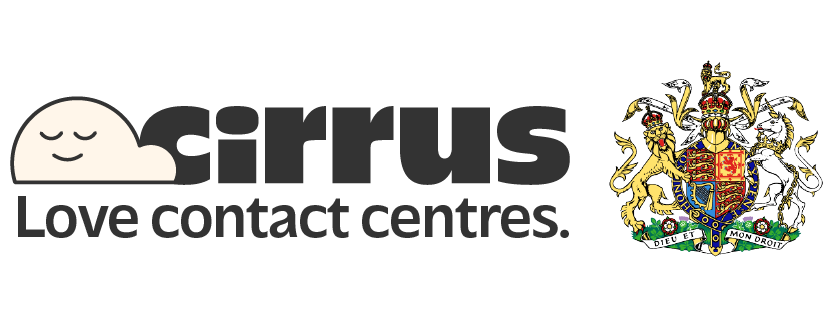What is workforce planning?
Workforce planning is all about making sure you have the right people, with the right skills, in the right roles, both now and in the future. It helps businesses plan ahead by looking at what roles they’ll need, spotting any skill gaps, and getting ready to meet changing demands.
This kind of planning keeps daily work on track while also supporting long-term goals, by linking business needs with the people available in your team, or the ones you might need to hire.
Why workforce planning matters
In busy places like contact centres, where customer needs change all the time, workforce planning is essential. It helps you handle busy periods, avoid being short-staffed, and keep your service quality high.
Some key benefits of workforce planning include:
- Minimising attrition rates through proactive retention
- Reducing labour costs through precise scheduling
- Addressing future skills development needs
- Supporting succession management for critical roles
- Guiding leadership on informed decisions tied to business strategy
These advantages contribute to stronger business outcomes, especially when integrated with tools like workforce optimisation solutions that help align staffing with real-time demand.
The workforce planning process
The workforce planning process involves a series of structured steps that can be applied at team, department, or organisational levels. While variations exist, the core process includes the following:
1. Environmental scan
Begin by examining internal factors such as company goals, staff composition, and attrition trends, alongside external factors like market changes or regulatory impacts. This scan supports a holistic approach to planning.
2. Supply analysis
Assess your current workforce by evaluating headcount, roles, performance indicators, tenure, and capabilities. Understand the mix of full-time employees, contract workers, and temporary workers.
3. Demand forecasting
Project future demand for talent based on new services, seasonal trends, business priorities, and expected growth. Use historical data to estimate how many people and what skill sets you’ll need.
4. Gap analysis
Identify mismatches between the current supply and future needs. Consider where new hiring, retraining, or restructuring is necessary. A strong gap analysis includes a review of both skills and coverage for key high-value positions.
5. Action steps
Develop a plan that addresses identified gaps. This may include recruitment, learning programs, or shifts in internal mobility. In this regard, workforce planning templates or CRM tools can help track execution.
6. Monitoring
Use tools and data to continuously monitor progress, refine forecasts, and adjust to evolving conditions. This ensures a continuous planning mindset and allows for timely course correction.
Strategic workforce planning
While operational planning deals with immediate staffing, strategic workforce planning focuses on preparing for the organisation’s future goals. It helps leaders anticipate:
- Shifts in job roles due to automation
- Changes in market demands
- Internal movements and promotions
- Retirement trends or leadership exits
- Future needs for edge skills and specialised roles
This long-term view aligns directly with broader organisational strategy, tying talent development to strategic objectives.
In contact centres, for example, this might include preparing agents to handle new digital channels through omni-channel solutions or upskilling to support changing customer experience standards.
The 5 R’s of workforce planning
A widely used model for workforce planning is the 5 R’s:
- Right people – Do you have staff suited to the roles?
- Right skills – Are those skills still relevant and evolving?
- Right place – Is talent deployed where it’s needed most?
- Right time – Are shifts matched to service demand cycles?
- Right cost – Are you using your workforce efficiently?
This framework offers a data-driven way to review workforce planning strategy through the lens of both service delivery and cost control.
Workforce planning in HRM
In human resource management, workforce planning serves as a link between people strategy and organisational objectives. It empowers HR professionals to:
- Forecast internal talent supply
- Build plans for internal mobility rate
- Monitor employee turnover and absenteeism rate
- Align hiring with strategic goals
- Manage the development of high-potential staff
HR teams often collaborate with managers and other key stakeholders to ensure the plan fits the overall business plan goals. They also use tools like the performance-potential matrix and feedback from exit interviews to refine plans.
This is especially relevant in sectors like government and healthcare or not-for-profit organisations, where smooth staffing transitions are crucial for service continuity.
Workforce planning tools and metrics
Modern businesses rely on a variety of tools to support adaptive planning and simulate different future scenarios. These tools may include:
- Scenario planning for headcount expansion or downsizing
- Demand models linked to volume forecasts
- Skills databases to track current and future skill needs
- Succession tracking for key positions
- Dashboards for tracking workforce planning metrics
- Alerts for spikes in absenteeism or churn
Many companies use workforce planning software integrated with contact centre platforms to manage staffing needs dynamically.
Workforce planners also monitor key HR metrics such as:
- Employee productivity
- Training ratio (on-the-job vs classroom)
- Time to proficiency
- Workforce diversity by role and level
Agile workforce planning
Agility is necessary in unpredictable environments. Agile workforce planning allows companies to shift priorities quickly, scale teams up or down, and respond to emerging demands.
This approach requires collaboration with stakeholders, clear communication channels, and platforms that enable quick changes without compromising compliance or service levels.
Agile planning is often used in contact centres to prepare for peak periods or support new product lines, ensuring that full-time team members, part-time workers, and contingent staffing options are all part of a flexible resourcing model.
Workforce planning best practices
To ensure successful implementation, businesses should:
- Use both operational workforce plans and strategic reviews
- Align workforce goals with corporate culture and team structures
- Conduct performance evaluations to support internal promotions
- Include succession planning as part of the workforce agenda
- Involve middle management in building and refining the plan
- Leverage tools that allow integration with Microsoft Teams for collaborative adjustments
Adopting a collaborative approach helps ensure that both frontline managers and business leaders stay aligned around workforce expectations.
Frequently asked questions
What is workforce planning?
It is the process of aligning an organisation’s staffing with its business goals by forecasting needs, assessing current capacity, and planning actions to fill any gaps.
What are the key steps in workforce planning?
Environmental scan, supply analysis, demand forecasting, gap analysis, action planning, and continuous monitoring.
What is strategic workforce planning?
It focuses on long-term talent needs and aligns workforce development with future business strategies, market trends, and company growth goals.
How does HR contribute to workforce planning?
HR teams drive data collection, forecast internal movement, and align people strategies with organisational development and future staffing requirements.
What are workforce planning metrics?
Metrics include time to hire, internal mobility rate, skills gaps, turnover rates, absenteeism, and cost per hire.
If you’re ready to strengthen your approach to workforce planning, consider a solution that brings analytics, scheduling, and integration into one view. Start by exploring workforce optimisation tools, or request a demo to see it in action.
Your Contact Centre, Your Way
This is about you. Your customers, your team, and the service you want to deliver. If you’re ready to take your contact centre from good to extraordinary, get in touch today.


